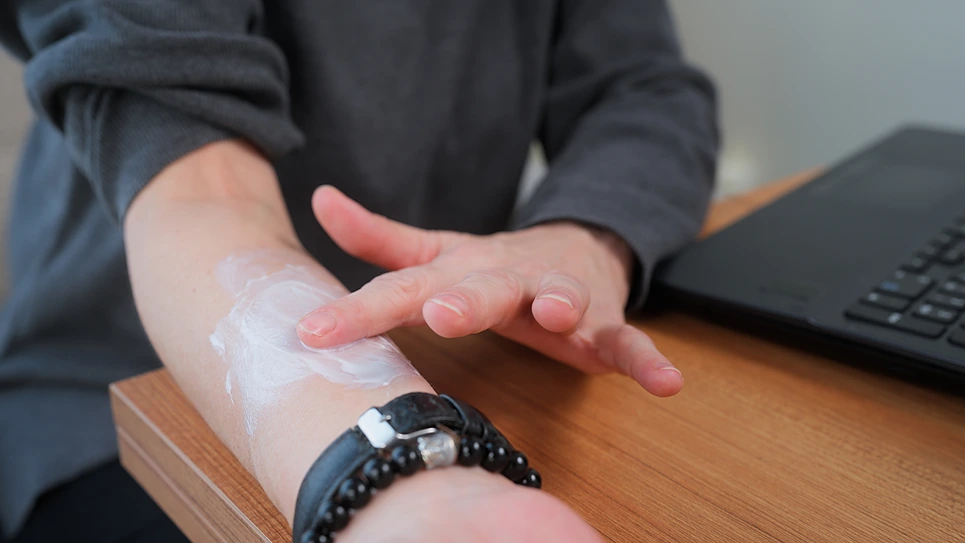
Testosterone is the main male sex hormone. It maintains male sexual characteristics. Testosterone levels decline with age, leading to hypogonadism. TRT raises testosterone levels in adult males with low or no testosterone.
Low testosterone can have various causes. TRT aims to restore normal testosterone levels, benefiting men’s physical and mental well-being. TRT is commonly used to alleviate symptoms and improve quality of life.
What is AndroGel?
AndroGel is a prescription medication containing testosterone, used as testosterone replacement therapy (TRT). It is a topical gel applied to the skin, usually on the shoulders, upper arms, or abdomen, to be absorbed into the bloodstream.
AndroGel comes in various concentrations, including the commonly prescribed AndroGel 1.62%, for more personalized dosing and application based on the patient’s needs and treatment response.
The FDA has approved AndroGel for the treatment of hypogonadism in adult men. Hypogonadism is a medical condition characterized by low or no testosterone production, which can lead to the symptoms associated with testosterone deficiency. However, it is important to note that AndroGel is not recommended for use in women, especially those who are pregnant or breastfeeding, due to the potential for harm to the unborn or nursing child.
Efficacy and Benefits of TRT with AndroGel
AndroGel testosterone replacement therapy benefits men with hypogonadism or low testosterone levels.
The main goal of TRT is to normalize serum testosterone levels. Studies have shown that long-term treatment with testosterone gels like AndroGel can effectively raise and maintain testosterone levels within the normal range, forming the foundation for the other benefits of TRT.
One of the well-documented benefits of TRT with AndroGel is improvements in sexual function. Men receiving this therapy have reported increased sexual activity, desire, and erectile function. The positive impact on sexual function is often the most noticeable outcome for patients undergoing testosterone replacement.
TRT with AndroGel has been associated with positive effects on mood and cognitive function. Testosterone regulates mood, and patients receiving this therapy have reported improvements in mood, reduced depression, and enhanced cognitive performance.
TRT with AndroGel has demonstrated benefits in body composition changes. Studies show that this therapy increases lean muscle mass and decreases fat mass, especially abdominal fat. These changes can positively impact metabolic health and cardiovascular risk factors.
TRT with AndroGel has been linked to improved bone health, resulting in progressive increases in bone mineral density, especially in the spine. This can help maintain bone strength and reduce the risk of osteoporosis and fractures in hypogonadal men.
Safety and Side Effects of AndroGel
Testosterone replacement therapy with AndroGel can benefit men with hypogonadism, but it’s important to be aware of potential side effects and safety considerations.
Potential adverse effects of using AndroGel include:
Prostate Issues: AndroGel can worsen symptoms for men with an enlarged prostate gland, known as benign prostatic hyperplasia (BPH). Regular prostate monitoring is recommended for men undergoing TRT to ensure the therapy isn’t worsening existing prostate problems.
Skin Reactions at Application Site: Some men may experience skin irritation, redness, or other reactions at the AndroGel application site. Proper application technique and avoiding skin-to-skin contact can help minimize these reactions.
Headaches and High Blood Pressure: AndroGel has been linked to increased risk of headaches and high blood pressure. Close monitoring of blood pressure is important for men on testosterone therapy to promptly identify and manage these side effects.
In addition to potential adverse effects, AndroGel and other forms of TRT have been linked to more serious side effects, including:
Liver Problems: Rarely, AndroGel has been linked to liver-related issues, like elevated liver enzymes or damage. Regular liver function tests are recommended for men on long-term testosterone replacement therapy.
Blood Clots and Cardiovascular Events: Some studies have suggested a higher incidence of atrial fibrillation, acute kidney injury, and venous blood clots in men receiving TRT. Due to these potential risks, caution is advised, especially for those with a history of cardiovascular disease or increased risk factors.
Administration and Dosing of AndroGel

AndroGel comes in various formulations and packaging options to suit patients’ testosterone replacement therapy needs.
The medication comes in different concentrations, including AndroGel 1.62% and AndroGel 1%, allowing healthcare providers to prescribe the appropriate strength based on the patient’s testosterone requirements and treatment response.
AndroGel is offered in different concentrations and packet and pump dispensing systems. Packets provide single-use application, while the pump allows adjustable dosing. This gives patients and healthcare providers flexibility to choose the most suitable option.
Proper application technique is crucial for the effective and safe use of AndroGel. The gel should be applied to clean, dry, and intact skin on the shoulders, upper arms, or abdomen. Patients must follow the priming instructions for the pump, if using that method, and ensure the gel is fully absorbed before skin-to-skin contact with others.
Regulatory and Clinical Considerations
Testosterone is a controlled substance due to its potential for abuse and misuse, so healthcare providers must follow strict guidelines when prescribing testosterone-containing medications like AndroGel.
The FDA has issued clear guidance for healthcare professionals on the appropriate use of testosterone replacement therapy, recommending it only for men with low testosterone levels caused by specific medical conditions, such as hypogonadism, confirmed by lab tests.
The FDA has stated that TRT should not be used for treating common age-related issues like low libido or fatigue without a diagnosed hormonal deficiency. This emphasizes the importance of proper patient selection and a confirmed diagnosis of hypogonadism before starting testosterone therapy.
The TRAVERSE Study, the largest trial of testosterone replacement therapy in men with hypogonadism, emphasized that the findings do not justify testosterone treatment for men without a clear diagnosis of hypogonadism. It highlights the need for healthcare providers to follow established guidelines and diagnostic criteria when considering TRT.
Adhering to these regulatory and clinical considerations is crucial to ensure the safe and appropriate use of testosterone replacement therapy, such as with AndroGel.
By prescribing TRT only for men with a confirmed hormonal deficiency, healthcare providers can mitigate misuse or abuse of these controlled substances while maximizing benefits for the appropriate patients.
Complementary and Alternative Therapies
AndroGel is one form of testosterone replacement therapy, but there are other options for men with low testosterone levels. Understanding these alternative therapies gives a more comprehensive view of hypogonadism treatment.
Other Forms of Testosterone Therapy In addition to AndroGel, other forms of testosterone replacement therapy include:
- Transdermal Patches: Testosterone patches provide a steady hormone release through the skin, an alternative to the gel application.
- Intranasal Gels: Intranasal testosterone gels provide a non-topical method of testosterone delivery, absorbed through the nasal mucosa.
- Intramuscular Injections: Testosterone injections into the muscle provide another TRT option different from topical and transdermal delivery systems.
- Implantable Pellets: Surgically implanted testosterone pellets offer a long-acting form of TRT, slowly releasing the hormone over several months.
Lifestyle changes and supplements may complement TRT for natural testosterone production and male health:
- Weight management and exercise.
- Stress reduction techniques
- The use of natural supplements like vitamin D, zinc, and herbs
By understanding the landscape of testosterone replacement therapies, healthcare providers and patients can make informed decisions about managing low testosterone levels and associated symptoms.
Conclusion

AndroGel testosterone replacement therapy is an effective treatment for hypogonadism. The topical gel provides a range of benefits, including:
- Normalization of serum testosterone levels
- Improvements in sexual function, such as increased sexual activity, enhanced desire, and better erectile function
- Positive effects on mood and cognitive function
- Changes in body composition, including more muscle and less fat mass
- Enhancements in bone health, including increases in bone density
AndroGel and other testosterone replacement therapies should be used cautiously due to potential side effects and cardiovascular risks. Adverse effects can include prostate issues, skin reactions, headaches, high blood pressure, liver problems, and increased risk of blood clots and cardiovascular events.
Men with low testosterone should seek medical guidance and testing before starting testosterone therapy. Healthcare providers must adhere to regulatory guidelines and diagnostic criteria to mitigate the risks of misuse or abuse.
Ongoing research explores long-term outcomes and emerging trends in testosterone replacement therapy. The goal is to optimize the balance between benefits and risks for individual patients, ensuring that men with hypogonadism can manage their condition safely and effectively.

